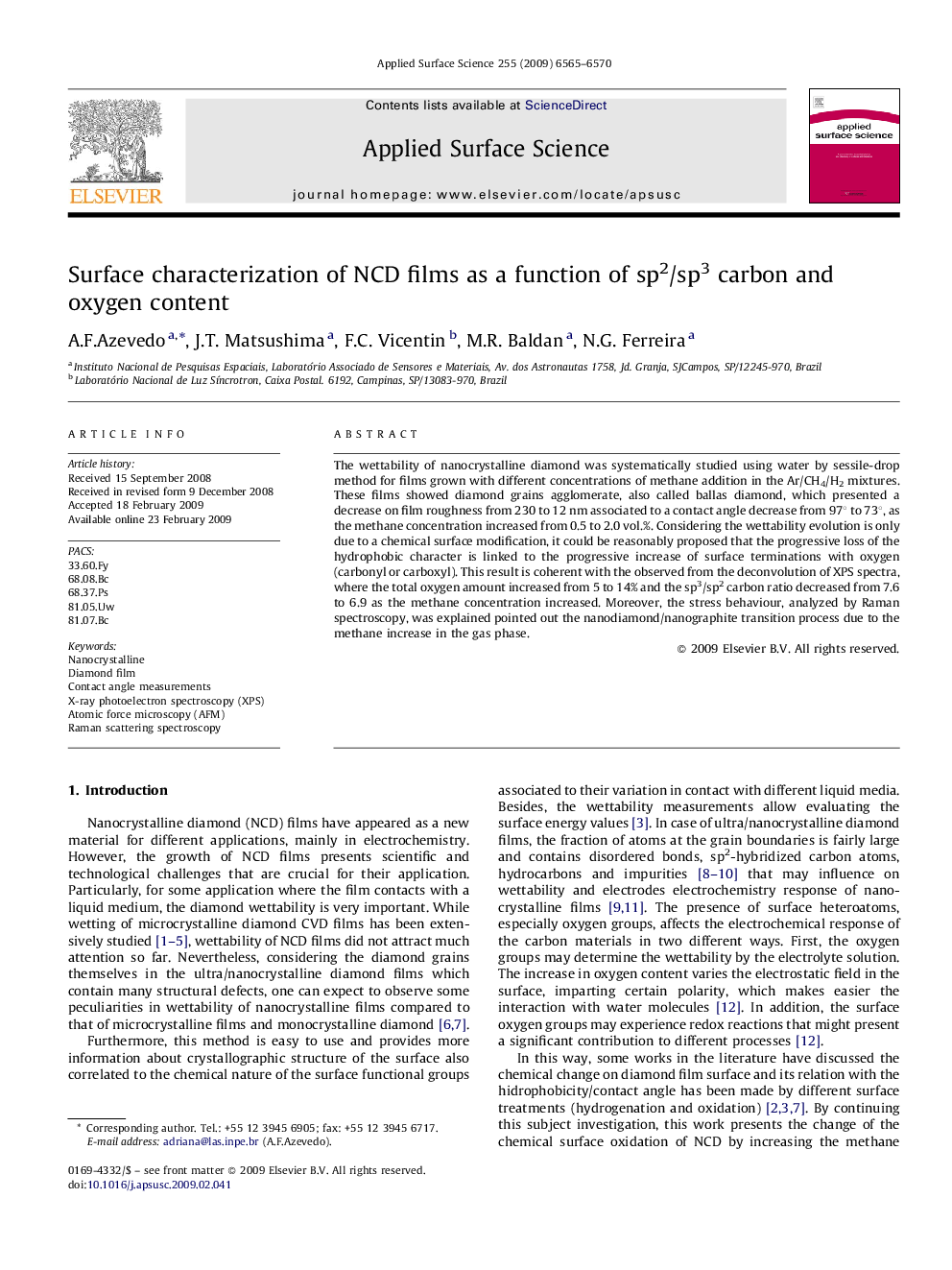| Article ID | Journal | Published Year | Pages | File Type |
|---|---|---|---|---|
| 5359787 | Applied Surface Science | 2009 | 6 Pages |
Abstract
The wettability of nanocrystalline diamond was systematically studied using water by sessile-drop method for films grown with different concentrations of methane addition in the Ar/CH4/H2 mixtures. These films showed diamond grains agglomerate, also called ballas diamond, which presented a decrease on film roughness from 230 to 12 nm associated to a contact angle decrease from 97° to 73°, as the methane concentration increased from 0.5 to 2.0 vol.%. Considering the wettability evolution is only due to a chemical surface modification, it could be reasonably proposed that the progressive loss of the hydrophobic character is linked to the progressive increase of surface terminations with oxygen (carbonyl or carboxyl). This result is coherent with the observed from the deconvolution of XPS spectra, where the total oxygen amount increased from 5 to 14% and the sp3/sp2 carbon ratio decreased from 7.6 to 6.9 as the methane concentration increased. Moreover, the stress behaviour, analyzed by Raman spectroscopy, was explained pointed out the nanodiamond/nanographite transition process due to the methane increase in the gas phase.
Keywords
Related Topics
Physical Sciences and Engineering
Chemistry
Physical and Theoretical Chemistry
Authors
A.F.Azevedo A.F.Azevedo, J.T. Matsushima, F.C. Vicentin, M.R. Baldan, N.G. Ferreira,
